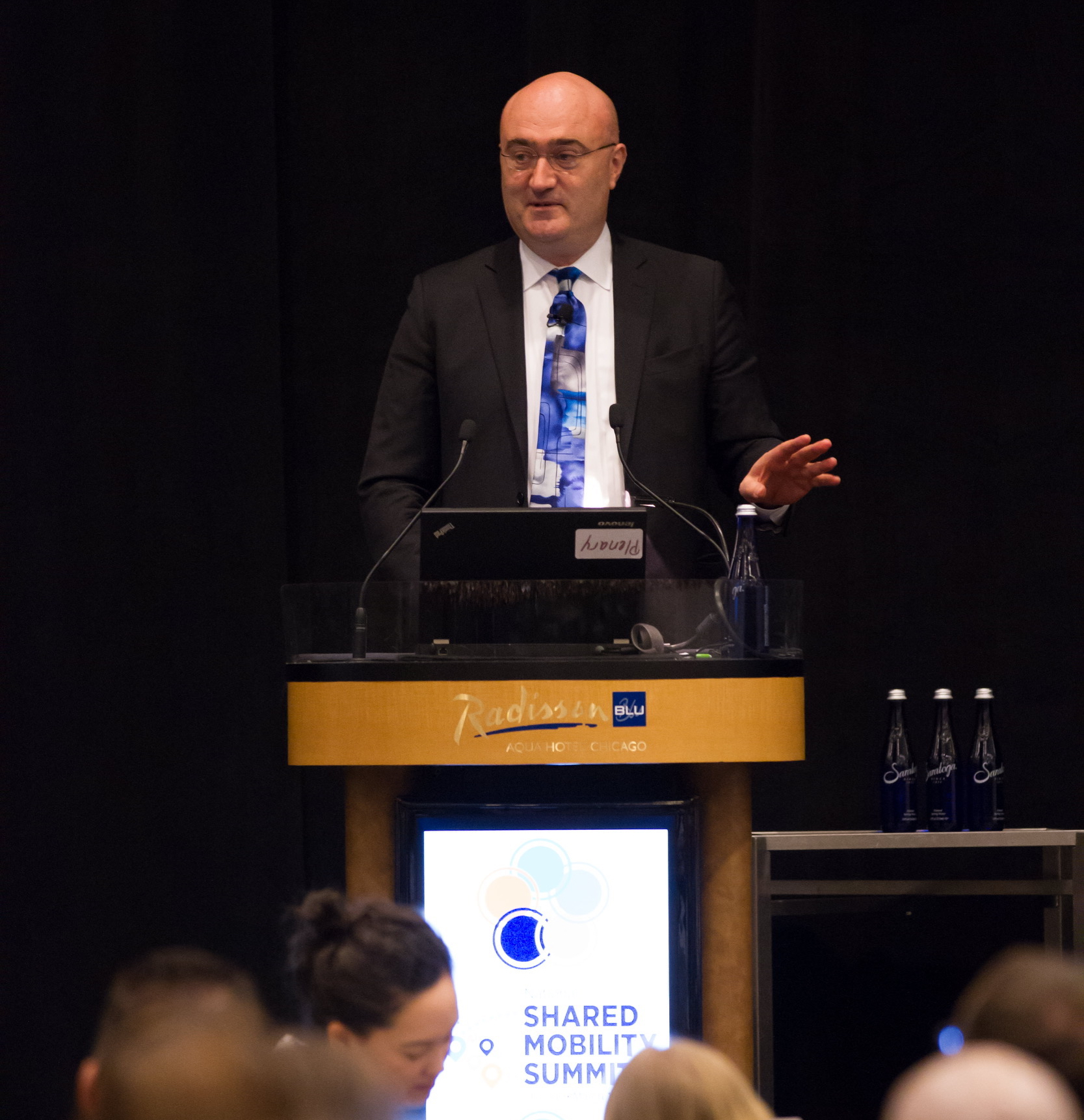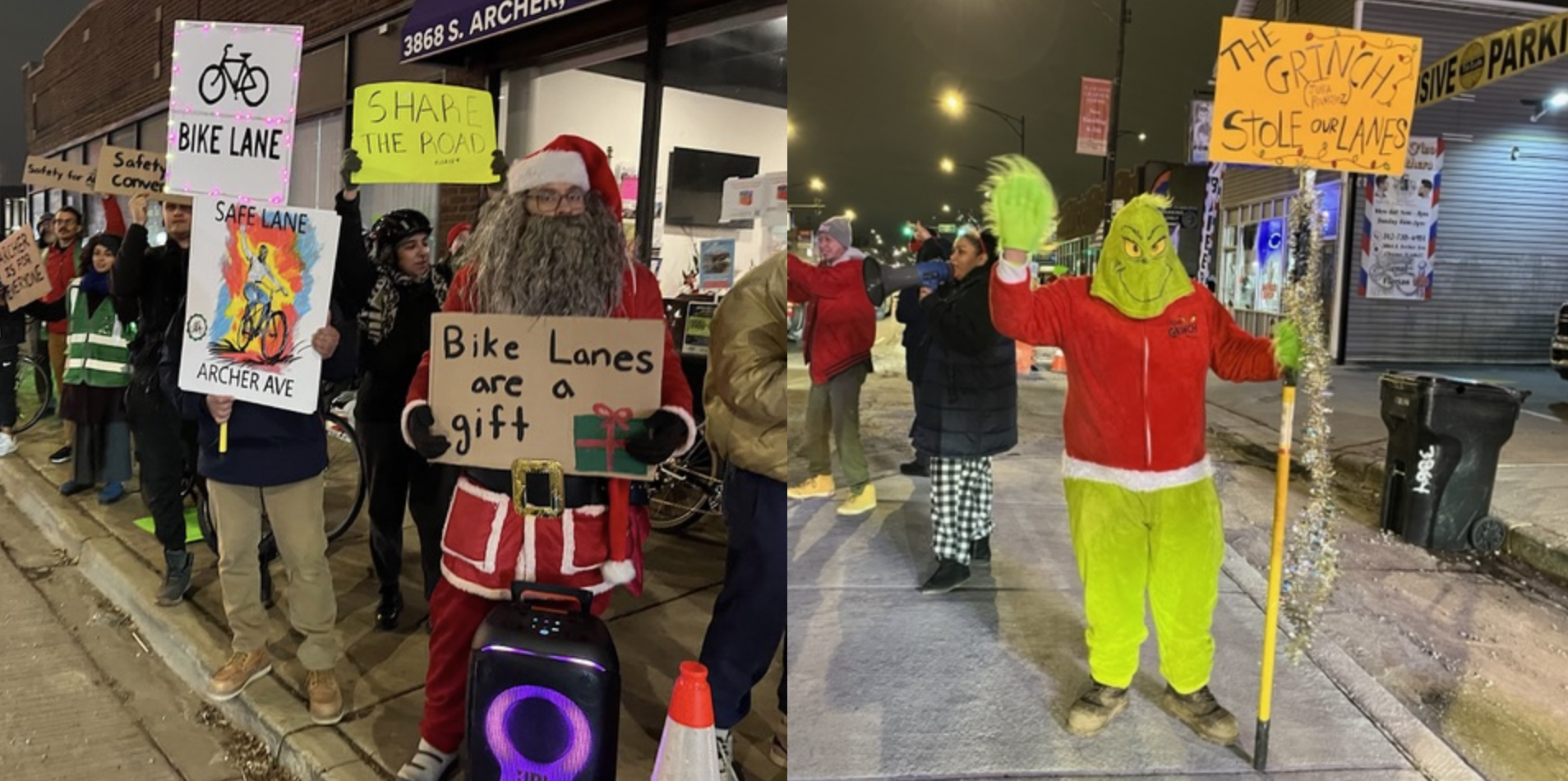The fixed route bus, that dinosaur of transportation technology, is also the most efficient urban-transit prospect of the future, transit guru Jarrett Walker said in Chicago Tuesday.
Walker appealed to 600 attendees at the National Shared Mobility Summit to shake the notion, encouraged by the hype around new technologies, that fixed-route buses and trains are obsolete. “We all know geometrically the fixed route is one of the most fantastic inventions in the history of transportation,” he said. “The fixed-route transit and the bicycle are basically the two ways we can move faster than walking speed while really using space efficiently, and because that’s a geometric fact, I’m confident that will still be true in 2100.”
Walker, a consultant to transit agencies and the author of the book Human Transit, enjoyed an increased measure of fame in December after getting into a Twitter tiff with Elon Musk, founder of the Tesla car company, who called him an idiot.
It appears the experience did little to warm him to technologists. On Tuesday he urged the audience, which included hundreds of transportation technologists, to be skeptical of promises made by technology companies: “They are corporations. They want to sell a product. They’re going to put out a vision that helps to sell their product, and that is very different from us as citizens and us as custodians of taxpayer money actually making good decisions about what is going to serve our communities.”
Walker credits information technology—and apps specifically—with solving a significant problem in transit: the problem of knowing what you need to know when you need to know it. “Some of you may not be old enough to remember what life was like without real-time information, when you just went right out into the snow and wondered when the bus was coming,” he said.
Apps solved that problem, but apps can’t solve some of transit’s other problems, he argued: they can’t change what’s happening in the shared space of cities. He offered "microtransit" as an example. Apps enable private companies to emulate some of the functions of public transit systems, but with dynamically generated routes that change in response to demand. Such a system fails, Walker contends, precisely where fixed-route transit succeeds.
“What’s happening in space is that [a transit] vehicle is meandering to get to the individual people instead of running in a straight line and asking people to walk down to it. If we think about that, we can understand why flexibility—flexible routing—is practically the definition of inefficiency. The efficiency of fixed routes lies precisely in the fact that people walk out to them, which means the vehicle runs in a reasonably straight line, and because the vehicle runs in a reasonably straight line, it’s a logical path for lots and lots of people to use it.”
Bus ridership has been declining nationwide, but Walker attributes that to inadequate investment and poor planning that fails to take advantage of what he calls “the genius of fixed-route service.” As a counterexample, he cites Seattle, a city where bus ridership is rising. “That is not a story about a city that is just off chasing cool things for little vehicles; it is a story of a city that has made a massive investment in fixed-route buses. And in the quality of service and the bus lanes to expedite them to get them into the city. We know that that’s the way we use space efficiently.”
Walker was the lead planner on the Seattle Transit Plan in the mid-2000s, one of many cities he has advised, and he has continued to work with Seattle’s suburbs. Fixed-route transit is “surprisingly” superior as well in suburbs, he said, where many transit agencies have attempted to switch to flexible-route transit systems, only to switched back to fixed route because of its efficiency. “We are always going to need vehicles sized to the appropriate capacity requirement, which means big buses in big cities. Actually surprisingly far out into the suburbs, the big bus is still the answer,” he said. “Even if it looks empty some of the time, it’s still the most efficient choice.”





